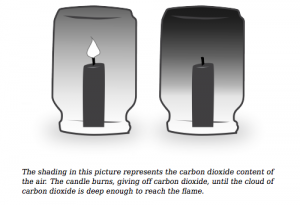Atticus says that you never really understand a person “until you climb into his skin and walk around in it”. What does this mean? Is it an easy thing for Scout to learn?
Atticus Finch means that Scout cannot understand a person thoughts and actions unless she looks from their perspective. Sometimes a person is influenced by an external or internal factor and does not truly mean what he or she does or says. However, it will be challenging for Scout to understand this concept. At her age, Scout’s spontaneous, obstinate mind has no particular set of values. If she does not know what her own beliefs are, how can she expect to understand other’s? Right now, she learns mainly by reading what is right in front of her. Scout has yet to understand how to read between the lines, and to see the entire picture. Moreover, because she is so young, Scout does not question the authenticity of the information she receives. For example, Jem and Scout believe all the rumors about Boo Radley are valid, and do not consider what might have really happened.
What do you think of Miss Caroline Fisher as a teacher? Can you find qualities which would make her good or not so good at her job? Is she better or worse as a teacher than Mr. Colegate?
Miss Caroline Fisher is a strict, close-minded teacher. Being strict is a good quality to have in the classroom, especially when teaching lots of young children. However, the concept of “crawling into another’s skin and walking around in it” is foreign to Miss Caroline Fisher. She is not a flexible person and believes children are all the same. Everyone has a different learning style, and Scout’s demonstration of her knowledge in today’s classrooms would have earned her praise. Instead, Miss Caroline Fisher insulted Scout’s father and embarrassed her in front of the entire class. At age twenty-one, the teacher is still too young and inexperienced to be teaching the class, even if the class is composed of six year olds. Overall, she is not a responsible, professional teacher and I definitely prefer Mr. Colegate to Miss Caroline Fisher!
Why does Aunt Alexandra accept that the Cunninghams may be good but are not “our kind of folks”? Do you think that people should mix only with others of the same social class? Are class-divisions good or bad for societies?
Even though Aunt Alexandra acknowledges the Cunninghams, the difference in their social class gives her a biased opinion. She believes the Finch family is more civilized and superior: “Besides, there’s a drinking streak in that family a mile wide. Finch women aren’t interested in that sort of people” (Lee 300). Aunt Alexandra thinks that drinking is an activity only certain kinds of individuals will partake in; kinds that she does not approve of. However, if Scout does not get the chance to understand others from different social classes, she may grow a biased opinion just like her aunt’s. Understanding different social classes will create a closer society with less class divisions. If there are fewer divisions, then people will become accepting and open-minded to different beliefs.
Although Atticus did not want his children in court, he defends Jem’s right to know what has happened. Explain, in your own words, Atticus’s reasons for this. (Look at the speech beginning, “This is their home, sister”.
The court trial can be a traumatic experience in the children’s lives, but Atticus wants his children to learn a valuable lesson from it. Jem’s reaction afterwards is the reason why adults hide everything: “How could they do it, how could they?” (Lee 285). He is witnessing the unfairness in the world that no child his age should see. But by exposing his children to these terrible events, Atticus can make Scout and Jem aware of what is wrong with their society. Once they know of these issues, they can work towards a fairer community. Atticus knows that changing ancient human beliefs does not happen in one lifetime, and by educating his children he can hope for continuation of his practice.
This story is set in the 1930s but was published in 1960. Have attitudes to racism remained the same (in the USA and Canada) or have there been any changes (for the better or worse) since then, in your view?
Racism has vastly changed over the past few decades. In To Kill a Mockingbird, people of colour were the embodiment of anything “evil”. Scout is very young and even she shows some form of discrimination: “You aren’t really a nigger-lover, then, are you?” (Lee 109). Black people were always considered the lowest of the low, and they were not allowed the same rights as everyone else. Compared to the 1930s, racism has vanished a lot due to activism, and many people of colour can now live freely in whichever way they would like. However, racism is not completely gone. For example, Donald Trump’s goal is to become president of the United States and he tries to gain followers through rally events. In a Huffington article just posted today, a black activist was dragged out by security guards, some Trump supporters name-calling and insulting him. Muslims are also the targets of discrimination lately, as people are making ridiculous assumptions about their connection with ISIS. There is less racism but some humans just never change their traditional opinions.
Atticus says that it’s a “sin to kill a mockingbird” (90). Atticus uses the mockingbird as a metaphor to represent innocence. There are three episodes in the story where Scout uses the phrase “to kill a mockingbird” and with each incident she displays a more complete understanding of the relationship between prejudice (or senseless hatred) and the sin involved in harming something or someone who does you no harm. Who are the “three mockingbirds” in this story?
The three mockingbirds in this story are Boo Radley, Tom Robinson and Dolphus Raymond. Boo Radley continuously displays his good qualities by helping Jem and Scout. Unfortunately, his rough past “killed” his innocence, and he stays confined within his house. Tom Robinson always tries his best to help Mayella out of pure good will, but after the court trial he succumbs to the pressure put upon him by society and acknowledges his guilt. Dolphus Raymond is also a mockingbird. He conforms to Maycomb’s expectations, acting in a certain manner: “It ain’t honest but it’s mighty helpful to folks. Secretly, Miss Finch, I’m not much of a drinker, but you see they could never, never understand that I live like I do because that’s the way I want to live” (Lee 268). He has lost faith in his community and simply accepts things as they are. These three victims of prejudice show how it is a sin to kill a mockingbird.



 Vanadium pentoxide (V2O5) is an ionic compound. It is mainly used to produce ferro vanadium, which is created by combining V2O5 with iron. Ferro vanadium is used to strengthen metals and make them anti-corrosive. Steel tools, aircraft and automobile parts are examples of ferro vanadium use.
Vanadium pentoxide (V2O5) is an ionic compound. It is mainly used to produce ferro vanadium, which is created by combining V2O5 with iron. Ferro vanadium is used to strengthen metals and make them anti-corrosive. Steel tools, aircraft and automobile parts are examples of ferro vanadium use.





